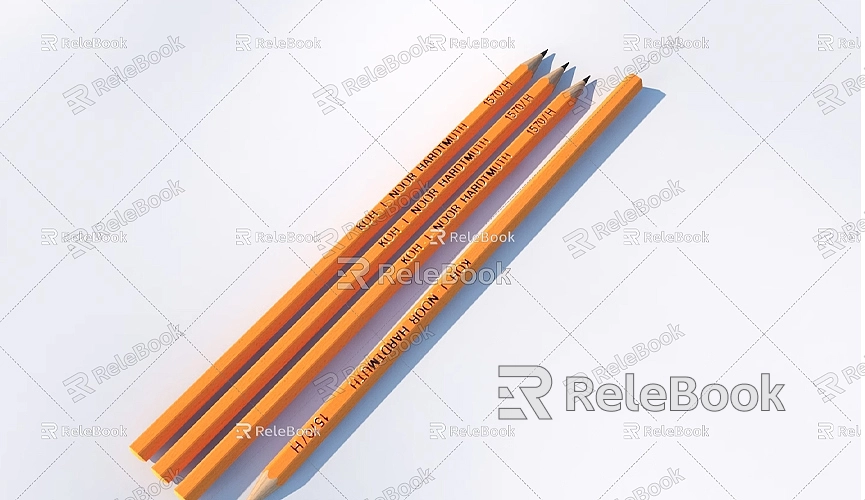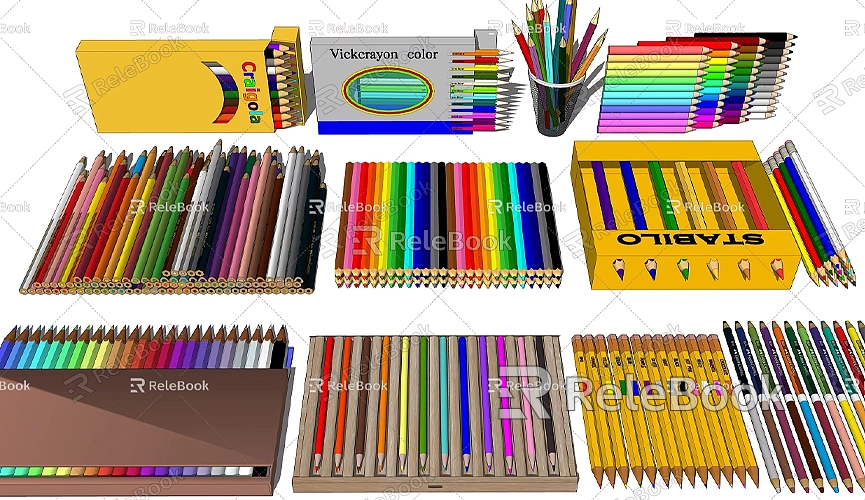How to Model Pencil Shavings in SketchUp
In 3D modeling, while we often focus on large, complex structures, sometimes simple objects can present their own challenges. Pencil shavings, though a common everyday item, can be tricky to model due to their organic shapes and textures. Pencil shavings include natural curves, broken fragments, and intricate wood grain patterns. Representing these details accurately in SketchUp involves not only modeling skills but also considerations of materials, lighting, and more.
This article will guide you through the process of modeling pencil shavings in SketchUp, from the basics to advanced techniques. Whether you're a beginner just starting with SketchUp or an experienced designer looking to improve your modeling skills, this guide provides detailed steps and practical tips to help you create realistic, natural-looking pencil shavings models.

Basic Modeling of Pencil Shavings
Pencil shavings are small, detailed objects, and special attention must be given to their finer aspects when modeling. They typically consist of two parts: the wood shell and the broken pencil lead fragments. The appearance of pencil shavings is irregular, often showing curling and breaking shapes, while the pencil lead is the harder, sharper part. To model pencil shavings in SketchUp, we’ll begin by addressing these two main components: the wood shavings and the pencil lead.
Modeling the Wood Shavings
The wood shaving part is typically the most challenging when modeling pencil shavings, as it involves curves, breaks, and deformations. In SketchUp, you can use the Path tool to create the basic shape of the wood shavings. With the Path tool, you can easily draw curved lines and then use the Push/Pull tool to extend these paths, forming the basic shape of the pencil shavings.
Wood shavings can take many forms: they can be short and slender, or small, irregular fragments, similar to paper shreds. Therefore, when modeling, it’s important to pay attention not only to the overall shape of the shavings but also to make them look natural. Adjusting the length, width, and curvature of each shaving to avoid overly regular shapes is key.
In SketchUp, you can use the Rotate or Offset tools to adjust the tilt and rotation of individual pieces. Since wood shavings in reality are scattered and irregular, tweaking the angle of each piece can add to the natural feel of the model.
Modeling the Pencil Lead
Modeling the pencil lead is simpler in comparison to the wood shavings, as the lead is typically long, thin, and rigid. It usually has a more straightforward, symmetrical shape. Start by using the Circle tool to draw the cross-section of the pencil lead, and then use the Push/Pull tool to stretch it into an appropriately sized cylinder. This process is straightforward, but attention must be paid to the breakage of the lead.
The broken part of the pencil lead is a crucial aspect of the pencil shaving model. In reality, the lead is often broken, and the break points are irregular. In SketchUp, you can use the Cut or Sculpt tools to simulate the fractured effect of the lead, making sure it doesn't appear too uniform or rigid.
At the break point, you can further sculpt the lead using the Push/Pull tool to create a worn or damaged appearance. Additionally, you can adjust the edges of the lead to include small chips or nicks, which will enhance the realism of the model.
Applying Textures and Materials
The look of pencil shavings is not just defined by their shapes; textures and materials play a crucial role in making them appear more lifelike. In SketchUp, applying the right textures and materials can help create a more natural and realistic appearance for your pencil shavings.
Applying Wood Textures
The outer shell of pencil shavings typically shows visible wood grain, as if it’s been shaved off a wooden pencil. To accurately represent this in SketchUp, apply an appropriate wood texture to the wood shaving part. SketchUp comes with a selection of basic wood textures, but if you're aiming for higher quality, you can download high-definition wood grain textures from external sources.
Once you’ve applied the texture, you may need to adjust the scale and direction of the texture. Wood grain typically follows the direction of the wood’s growth, so rotate the texture to align with the natural direction of the shavings. You can use the Scale tool to fine-tune the texture, ensuring that the size and detail match the look of actual pencil shavings.
To enhance the depth and realism of the wood shavings, you can add finer details such as cracks and surface wear. These can be drawn directly onto the texture or added using detail maps in SketchUp.
Adding a Metallic Look to the Pencil Lead
The pencil lead generally has a hard, metallic appearance, similar to lead or steel. In SketchUp, you can apply a metallic texture to simulate the appearance of the pencil lead. Select a suitable metal material, such as lead, silver, or steel, and adjust its reflective properties to mimic the look of pencil lead.
Since broken pencil lead often has a slightly shiny, reflective surface, increasing the reflectivity can enhance its realism. Use SketchUp's material editor to adjust the reflectivity and glossiness of the pencil lead, giving it a harder, metallic look.
Enhancing Detail and Lighting Effects
To make the pencil shavings model more lifelike, lighting plays an important role. SketchUp provides basic lighting settings, allowing you to adjust the light source’s angle, intensity, and shadow effects according to your scene. Proper shadows on the pencil shavings will make their shapes appear more three-dimensional, adding to the visual impact.
Additionally, small details like cracks, wear, and dust can significantly improve the model's quality. These can be added through small sculpting adjustments and detail work. By refining these finer details, the pencil shavings will appear more “alive,” thereby increasing the model's overall realism.
Using External Resources and Plugins
Although SketchUp offers a variety of modeling tools and materials, using external resources and plugins can significantly enhance modeling efficiency and quality. For instance, if you need high-quality 3D textures and HDRIs for your models and scenes, you can download them for free from Textures Relebook. If you need intricate 3D models, you can visit 3DModels Relebook, which offers a large collection of high-quality 3D resources. These resources not only save you time but also provide you with professional-level textures and models, further improving your work’s quality.
Additionally, the SketchUp plugin marketplace provides many efficient modeling tools. For example, the Artisan plugin can help you refine the surface details of objects, and the SubD plugin allows you to use more complex subdivided surfaces to create smoother shapes. These plugins can significantly improve your modeling speed and precision, especially when working on complex objects.
By following this guide, you should now have a comprehensive understanding of how to model pencil shavings in SketchUp. From modeling the basic wood shavings and pencil lead to applying detailed textures and materials, and fine-tuning lighting and sculpting, each step requires patience and careful attention to detail. With the right tools and plugins, you can easily create high-quality pencil shaving models that look more realistic than ever.
If you're working on creating models and virtual scenes and need high-quality 3D textures and HDRIs, visit Textures Relebook for free downloads. If you need exquisite 3D models, go to 3DModels Relebook. I hope this guide helps you improve your modeling skills and create beautiful 3D works.

